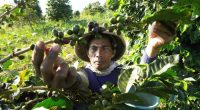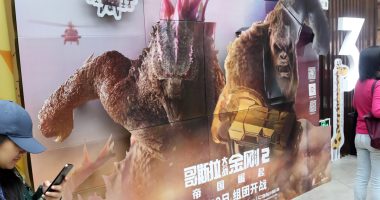Less than a month ago a message appeared on a white sheet hung over a bridge in Rosario, a river port city of 1.3mn in Argentina, warning of the impending “death of innocents” if the provincial government continued a crackdown on gangsters.
The threat arrived days after the security minister of Santa Fe province, where Rosario is located, published photos showing shirtless gang members lined up on the floor of a prison corridor — reminiscent of images often shared by El Salvador’s famously hardline president, Nayib Bukele.
The birthplace of well-known figures from revolutionary Che Guevara to football superstar Lionel Messi, Rosario has more recently become known for a different reason: it has transformed into a drug trafficking hub as Latin American groups stepped up exports of cocaine to meet growing demand in Europe and the US.
An unprecedented wave of gang attacks on civilians killed four people and triggered several paralysing strikes by transport workers in the city in March. The murders shocked Argentina, which has never suffered the level of drug violence affecting other countries in the region such as Colombia and Mexico.
“Nobody goes out at night, or sometimes even in the day,” said Jorge, a taxi driver in his mid-forties. “They have cut off our freedom.”

The violence has also exposed the challenge of tackling drug-related crime in the depths of a severe economic crisis.
Javier Milei, Argentina’s libertarian president who took office in December, has blamed previous left-leaning governors of Santa Fe province for “surrendering the city to criminals”. Milei won strong voter support in Rosario, with 58 per cent of the vote in November’s run-off election.
He has deployed hundreds of federal police to Rosario, presented a bill to congress that would allow the military to intervene and pledged to charge gang members as terrorists.
“The security forces have our unrestricted support to do whatever it takes to restore order,” Milei said.
But at the same time, Milei, a self-described “anarcho-capitalist” bent on shrinking Argentina’s bloated state, has slashed funding for Santa Fe and other provinces in his drive to end Argentina’s chronic fiscal deficit. Milei has almost entirely eliminated discretional federal transfers, which made up 8 per cent of Santa Fe’s budget in 2023.
Milei’s government has also shut down 88 per cent of Argentina’s public works projects, which he says are a source of corruption. Projects put on ice include the planned regeneration of a slum neighbourhood in Rosario.

Milei’s spokesperson told the Financial Times that no additional funds had been earmarked to help Santa Fe tackle the gangs, beyond the security force provision.
Yet provincial officials in Rosario said it would take more than beefed-up security to solve the problem.
“The gunfight is what you see. But behind that there are all kinds of social problems and infrastructure issues,” said Ramiro Galassi, an adviser at the Santa Fe security ministry.
Corruption among poorly paid provincial police and prison staff is a major problem, experts say, as is Santa Fe’s vast black-market economy for legal goods, which makes it easier for drug traffickers to launder money.
“We don’t solve this without a much stronger, more sophisticated state than we have now in Santa Fe,” said Luis Schiappa Pietra, a provincial public prosecutor working on drug-related cases. “That costs money here like it does everywhere else.”

In a working-class neighbourhood on the outskirts of Rosario, one-storey cinder-block homes and semi-paved streets are punctuated by so-called bunkers: brick-sized holes in the wall that function as makeshift corner shops where boys — known by locals as “little soldiers” — sell drugs.
Blocks away, several teenagers sit in the humid courtyard of a small community centre, waiting for a pizza lunch. The centre, which has a library and hosts boxing, football and robotics classes, receives municipal, provincial and national funding, said its leader, who declined to give his name for security reasons.
“This is the last link in the chain, because beyond this place these kids have nowhere to go but [the streets],” he said. “Since December, we’ve had no funding from any level. At the end of March it runs out. I don’t know what happens next.”

The provincial government declined to comment on the specific case but said it had increased funding for some social programmes by 80 per cent. Santa Fe’s equality minister Victoria Tejeda said soup kitchens remained operational and “are working very well”.
However, she added that “we are receiving no support from the national government”.
Rosario’s position on the Paraná River, a key route out of South America to the Atlantic, has left it vulnerable as the region’s drug trade has expanded away from historic hubs such as Colombia and Mexico. A 2015 UN report found that Argentina was the most-named country of transit for cocaine by importing countries in the previous 10 years.
The gangs operating in Rosario are “very small, neighbourhood groups” rather than the large cartels that dominate headlines in places such as Mexico, El Salvador and Brazil, said Carlos del Frade, a former journalist and current provincial lawmaker who has studied the city’s drug problem for decades.
“They are paid by [foreign] gangs to [help] get their drugs to the port. For every 1.5 tonnes, they might get 50 kilos,” he said. “That is what ends up fuelling the skirmishes between 46 different groups in Rosario.”
Esteban Santantino, director of analysis in the provincial security ministry, said it was impossible to give a number of the groups or individuals involved because they do not operate within the hierarchical structures and fixed loyalties of cartels, but rather in “improvised alliances”, picking up contract jobs.
“The fact is, organised crime in Rosario is quite disorganised,” he added.
Santa Fe’s governor, Maximiliano Pullaro, a former security minister from the centrist Unión Cívica Radical party, was elected last year on a pledge to take hardline measures to “reclaim the streets” after a record 291 people were killed in the Rosario area in 2022 — giving the city a per capita rate five times higher than the national average.
Pullaro has stepped up the provincial police presence and launched a tougher regime for imprisoned gang leaders, who authorities say give the orders for most crimes. He has limited their visits and increased cell raids.
Those measures have coincided with a drop in murders in Rosario in the first three months of 2024, with 32 recorded by March 25, compared with 79 in the same period last year. But after the outbreak of attacks on civilians, some fear that the improvement may not last.
“We are on the brink of a decisive new cycle of violence in Rosario,” said Juan Monteverde, leader of a new leftwing party, who narrowly lost the city’s mayoral election last year. “The gangs have never felt more empowered . . . and the state has never been more disempowered and had so few resources.”

In Empalme Graneros, a working-class neighbourhood that has been a focal point for drug-related violence, federal police forces were visible on every other street last week.
Osvaldo Ortolani, of the local neighbourhood association, said he was worried the police presence would return to normal “minimal” levels if the national spotlight faded. The deliberate killings of non-gang members, however, may have a lasting impact, he said.
“There was a Robin Hood myth before [about gangsters]: ‘that guy’s not so bad, I know him, he’ll take care of us,’” he said. “That has broken. The codes are broken . . . Now there is just panic.”
Also Read More: World News | Entertainment News | Celeb News









